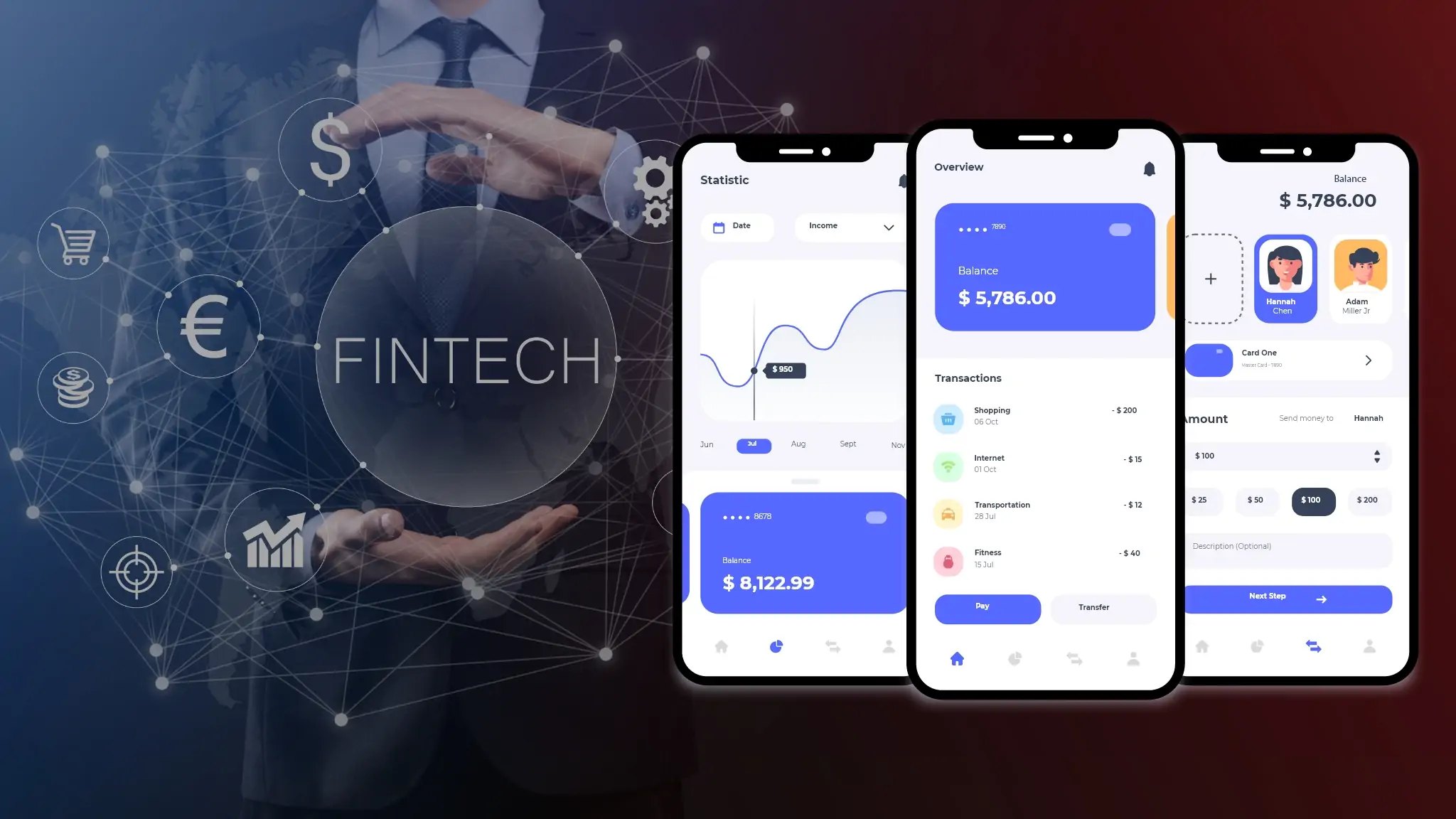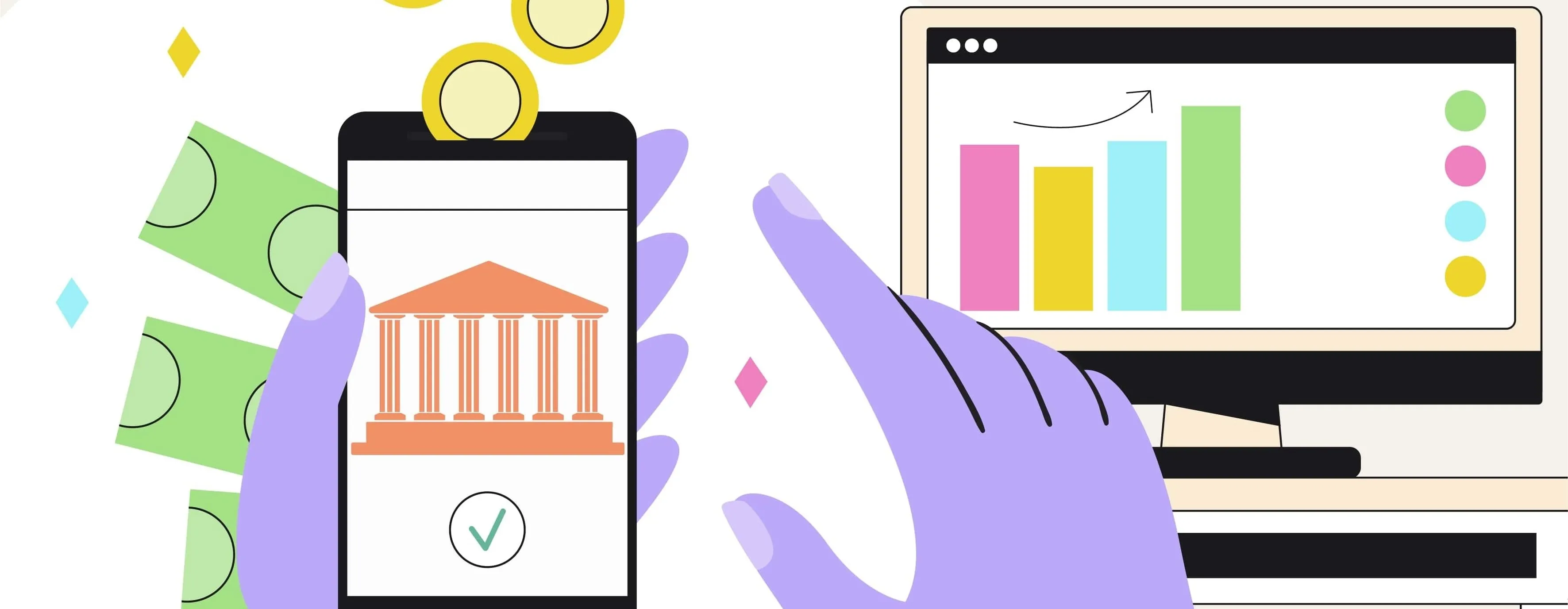FinTech, the slick new word for anything related to banking and technology, includes budgeting apps as well as money transfer services. The need for creative and safe financial apps is only going to increase as the FinTech sector flourishes. In little more than a decade, FinTech apps have completely changed the way we handle our finances, from peer-to-peer lending and mobile banking to AI-powered robo-advisors.
This blog will give you details of FinTech app development including its types, guidelines for development, essential features for FinTech apps, etc. If you're a developer wishing to tap into this intriguing sector, this complete tutorial is for you!
Why Do You Need FinTech App Development?
The financial technology (FinTech) industry is booming, revolutionizing the way we manage our money. It is expected to reach $700 billion by 2030, encouraging the creation of novel financial apps. This convergence of factors suggests financial app development will remain popular.
The Fintech app helps businesses gain enhanced security, simpler operations, and expanded customer reach, while customers gain the convenience of managing funds from anywhere, faster transactions, and better financial tools for decision-making.
By developing a user-friendly mobile application, you can address specific needs within the financial services industry. A well-designed FinTech app can transform the user experience for your customers, whether it's by simplifying money transfers, providing on-demand investment opportunities, or offering personalized financial tools.

>> Read more: Digital Transformation in Banking and Financial Services
7 Types of FinTech Applications
Digital Banking Applications
Digital banking apps allow users to check balances, transfer funds, make mobile payments, and even apply for loans, all from a smartphone or tablet. Many of these capabilities are powered by modern consumer lending platforms, which streamline the loan application and approval process. These platforms ensure 24/7 access and improved transparency in managing personal finances.
Payment Processing Apps
These apps serve as a bridge between payment service providers and customers, simplifying the online and mobile payment process for both businesses and consumers. They enable businesses to accept a variety of payment methods (debit, credit, etc.) and make the checkout process easier for clients.
Insurance Tech Applications
InsurTech applications use technology to enhance the insurance experience. They employ AI to assist consumers in comparing rates, managing claims, and even receiving personalized quotations based on characteristics such as lifestyle and risk assessments. This can result in faster applications, better deals, and a more streamlined claims procedure.
Investment Applications
Investment applications seek to make investing more accessible to everyone. They enable users to trade stocks, bonds, and other assets with simplicity, often by removing intermediaries and lowering commissions. Robo-advisors go a step further, providing automated investment management tailored to your specific financial goals and risk tolerance.
Personal Finance Management Apps
These budgeting and expense-tracking apps enable users to get control over their spending. They let users create objectives, manage their income and expenses, and receive useful insights into their financial habits. These apps can assist users in making more informed financial decisions by centralizing financial information.
Tax Management Apps
Tax season can be stressful, but tax management software can help make the process easier. These programs can help you file your taxes, automate computations, and ensure you claim all eligible deductions and credits.
Exchanges and Exchange Services
These platforms enable users to purchase, sell, and trade currencies (including cryptocurrencies) online. They provide an easy option to convert money for overseas transactions or to invest in the foreign exchange market.
5 Steps of the FinTech App Development Process
Step 1: Planning and Gathering Requirements
Successful FinTech app development begins with strategy and requirement collection. This first phase establishes your project and guarantees you're building an app for your intended audience.
Idea: Define your app's purpose and audience. Who are you helping and what is their problem? A useful financial software requires understanding your audience's demands and pain areas.
Competitive Analysis and Market Research: Learn about FinTech apps and market gaps by conducting extensive market research. Analyze your competitors' strengths and weaknesses to find out what works and how to differentiate your app.
Prioritise Features: Based on market research and target audience analysis, prioritize user-valued features. Consider user demand, technological feasibility, and how features fit your budget and development timeframe.
Compliance with Regulations: Before designing your app, you must understand and follow all important financial regulations for your target market. Follow these rules to safeguard your business and develop user trust.
Step 2: Design and Prototyping
Design and prototyping can begin after you understand your app's functionality and audience. Creating an app that is visually appealing, straightforward, and easy to use requires this stage.
Information Architecture (IA): Consider IA your app's organization plan. Like a well-organized home, a well-designed IA helps users browse your app and discover the features they need. This entails designing interfaces, menus, and information flow.
UX/UI Design: To design a beautiful and user-friendly UI, consider fonts, colors, button placement, and layout. UX design considers the full user journey, from sign-in to transaction. Careful UX planning ensures users can achieve their goals quickly and easily, making the experience more gratifying and engaging.
Prototype: Test prototypes with real users lets you improve your design and make sure your app is on track before committing time and money to production.
>> Read more:
Proof of Concept (PoC) vs Prototype
Proof of Concept (POC): A Guide to Validating Your Ideas
Step 3: Development and Implementation
After establishing a goal and user-friendly design, create a FinTech app. This stage involves using developers to create your app.
Tech Stack Choice
Efficient and successful development requires the correct tech stack, like building a house requires the right tools. The tech stack is the collection of programming languages, frameworks, and tools developers use to build your project. This selection will depend on the app's functionality, user experience, and platform such as iOS and Android. Your project will be constructed swiftly, efficiently, and maintainably with the proper tech stack.
API Integration
FinTech apps use several financial services and functions. Bridges like APIs let your software talk to these external services. An investment app may use a stock exchange API to give real-time market data. Planning and integrating the right APIs is essential for your app's main functions.
Robust Implementation Security
Your FinTech app must have strong security to garner user trust since it handles sensitive financial data. This requires data encryption, secure authentication, and regular penetration testing to find and fix weaknesses. Security is important since consumers will only trust a secure app with their financial information.
Development Method
Developers will code your app according to design and coding standards after selecting the tech stack and APIs. To guarantee the app works properly, this step involves coding, integrating functionality, and thorough testing. Development may include back-end (server-side logic), front-end development (user interface), or both, as well as mobile app development for your target platforms (web, mobile, or both).
Step 4: Testing and Quality Assurance
Your FinTech software must be thoroughly tested and QA'd before release. This stage guarantees your app is functional, safe, and user-friendly.
Functional Testing: Involves thoroughly testing user login, money transfers, investment transactions, and other fundamental app functionality.
Security Testing: Uses specialized tools and methods to find and fix vulnerabilities. This safeguards user financial data and transactions and your business reputation. Remember, users will only trust safe apps.
Usability Testing: You may uncover usability issues and make your app more intuitive and user-friendly by observing and collecting user feedback.
Performance Testing: Replicates load circumstances to guarantee your software can withstand usage surges without slowing. This identifies bottlenecks and guarantees your software works reliably under heavy use.
>> Read more:
Detailed Explanation of 7 Software Testing Principles
4 Levels Of Testing In Software Testing
Step 5: Launching and Marketing
Your FinTech app is ready to launch and attract customers after development and testing. Promoting your software and using smart marketing methods is the final step.
Marketing: Optimize app store listings with relevant keywords to increase the likelihood that financial solution seekers will locate your app. Social media campaigns and content marketing educate potential users to harness trusted voices. A well-planned marketing strategy will bring your software in front of the most beneficial people.
App Maintenance: Launch your app on platforms, then track downloads, user interaction, and user feedback after your app is online. Analyzing this data lets you find faults and use user feedback to improve your app's functionality and user experience. Maintaining and updating your FinTech app is crucial for user retention and long-term success.
By completing these five steps—planning, design, development, testing, launch, and maintenance—you can create a strong, user-friendly FinTech software that stands out in the market.

Essential Features for FinTech Apps
Security and Compliance
User Authentication/Access Control: Use robust MFA to protect user accounts. This may involve passwords, text message one-time codes, fingerprint scans, or facial recognition. To protect unattended phones and tablets, consider automatic session timeouts for dormant devices. Encrypting data at rest and in transit increases security.
Compliance With Regulations: Data protection, AML, and KYC laws must be researched and followed. These regulations show your commitment to user protection and build user trust.
>> Read more: An Ultimate Guide To Application Security for Businesses
UI/UX Design
Intuitive Interface: Aim for a straightforward interface that even non-technical consumers can use. Maintain a logical structure across all screens, use clear and consistent iconography, and organize content. Make sure your software works on smartphones and tablets to attract more users.
Smooth User Flow: Simplify money transfers, bill payments, and investment transactions. Avoid superfluous questions and reduce action processes. Providing clear instructions and feedback along the user experience empowers and gives users financial control.
Features for Accessibility: Screen reader compatibility, customizable font size, and high color contrast are disability assistance features.
Integration and Data Insights
Integration with Financial Services: Connect popular bank accounts, credit cards, and investing platforms to your app. Users can consolidate their finances and manage all accounts from one site, simplifying financial administration. Allow secure data interchange between your app and various external financial institutions using APIs.
Data Analytics and Reporting: Give users financial insights with spending tracking, budgeting tools, and personalized reports. Use charts and graphs to visualize spending habits, identify areas for improvement, and set reasonable financial objectives.
Personalized Advice: Utilise user data and financial goals to make personalized recommendations. This could include customized budgeting, investment, or debt management. Data insights let you customize the app to each user's financial needs.
Cost to Build a FinTech App
The price to create a FinTech app might vary from $30,000 to $300,000 or more depending on these criteria.
Here's a more detailed analysis broken down by complexity:
A simple FinTech app, such as one for money transfers: Between $30,000 and $50,000
$50,000 - $100,000 is the range for medium-complexity software (such as a budgeting app with some investment capabilities).
Over $100,000 for a complex FinTech app, such as an advanced trading platform.

>> Read more:
- Detailed Breakdown For App Development Cost
- How Much Does It Cost to Design An App?
Factors That Affect FinTech App Development Cost
App Complexity
Simpler FinTech apps with a smaller set of core functionality will naturally be less expensive to design and develop than complicated apps with more features. Defining the critical features of your target audience early on will help you cut development expenses.
Development Team Location
The location of your development team might have a substantial impact on overall costs. In general, development rates are greater in North America and Western Europe than in certain Asian or Eastern European regions. However, factors such as expertise, skill set, and project complexity can all influence expenses.
In-House vs. Outsourced Development
Establishing an in-house development team incurs recurring expenses for staff, benefits, and office space. Outsourcing development to a qualified firm can be a cost-effective option, particularly for startups or projects requiring unique resources.
>> Read more: Top 11 Fintech Software Development Companies For Businesses
Features and Integrations
The amount of features and integrations you intend to include in your FinTech app has a direct impact on development time and costs. For example, interacting with several financial institutions via APIs will be more involved than a simple money transfer service. Prioritizing the most important features and functions will help you manage development expenditures more effectively.
Security Requirements
Any FinTech app must have strong security measures in place. The level of security features you include will affect development expenses. Multi-factor authentication, data encryption, and frequent security testing are all important considerations when developing a secure and trustworthy FinTech app.
Conclusion
More and more people are using online financial services like trading platforms, e-wallets, online insurance, and digital banks. If you want to create a Fintech app for your business, finding an appropriate Fintech app development company is crucial to ensure your app quality.
Relia Software is a Fintech app development company that concentrates on developing Fintech mobile applications that are both secure and user-friendly. We also automate duties and processes by utilizing the most recent technologies, including AI, machine learning, and RPA.
>>> Follow and Contact Relia Software for more information!
- development

